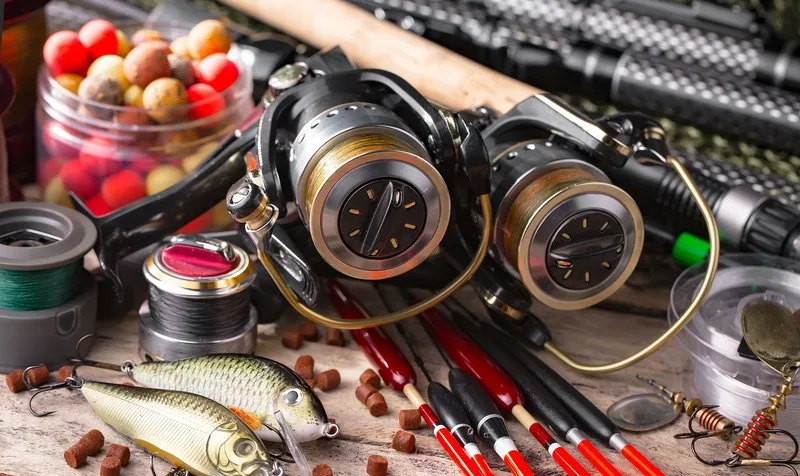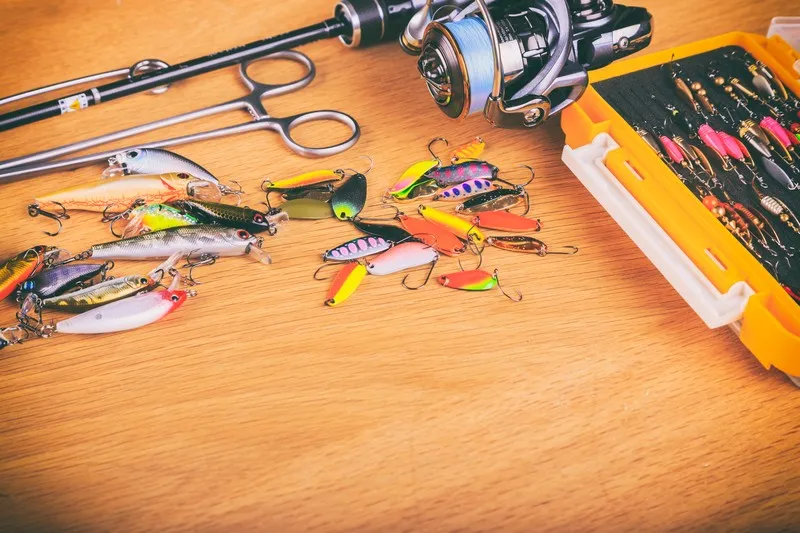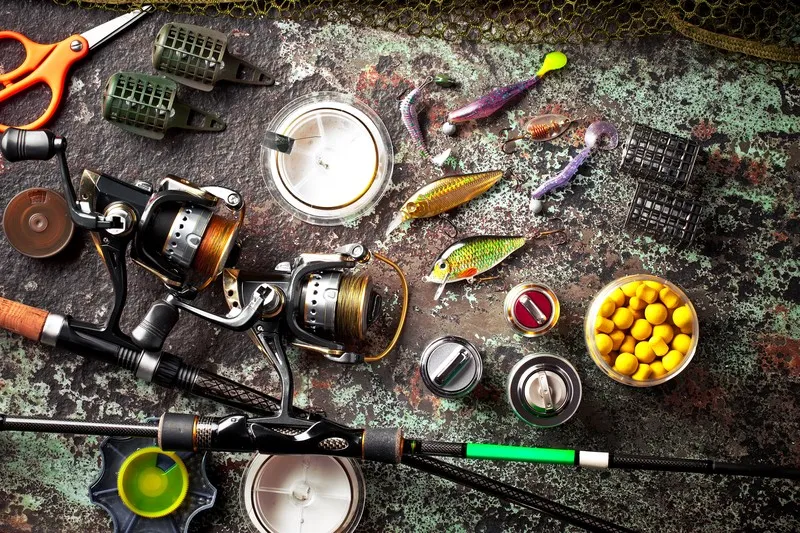The Wacky World Of Wacky Rigs
Fishing is more than just a sport; it’s a way of life. There are so many different approaches to fishing, from fly fishing to jigging, but there’s one technique that has really captured my heart: wacky rigs. For those who don’t know, a wacky rig is simply a hook with bait attached in the middle of the worm or lure.

The hook is then placed in the middle of the bait and allowed to hang freely. The beauty of wacky rigs is how simple they are yet how effective they can be.
The natural movement and action of the baited hook can be irresistible to fish, making for some exciting catches. Whether you’re an experienced angler or just starting out, wacky rigs are sure to become one of your go-to techniques.
My Experience With Wacky Rigs
I remember the first time I tried using a wacky rig. I was out on a lake with my uncle, who had been telling me about this technique for weeks leading up to our trip. I was skeptical at first – it seemed too easy – but I decided to give it a shot anyway.
Within minutes, I had caught my first fish using a wacky rig, and from then on I was hooked (pun intended). It was exhilarating feeling like I had finally found my groove as an angler after struggling with other techniques for so long.
Since that day on the lake with my uncle, I’ve been perfecting my wacky rigging skills and experimenting with different baits and hooks. It’s become one of my favorite ways to fish because it’s both relaxing and exciting all at once.
No products found.
In this guide, I’ll share everything you need to know about wacky rigs – from how they work to advanced techniques – so that you can become a wacky rigging pro too. Let’s dive in!
The Basics Of Wacky Rigs
What Is A Wacky Rig?
A wacky rig is a versatile and simple fishing technique that involves hooking the bait through the middle instead of the head or tail. This creates a unique, wriggling action that can entice even the most finicky fish to bite. The name “wacky rig” comes from the unconventional method of attaching the hook to the bait, which looks “wacky” compared to other rigs.
Materials Needed To Create A Wacky Rig
To create a basic wacky rig, you’ll need only three things: a hook, a soft plastic worm or bait, and an O-ring. The hook used for wacky rigs is typically smaller than other hooks and has an offset shank design to ensure that you don’t miss any bites.
Soft plastic worms or baits come in different colors and sizes, so choose one that matches the type of fish you want to catch. The O-ring serves as a connector between the hook and the worm/bait.
It’s important because it helps prevent your bait from falling off too easily when casting or retrieving. You can purchase pre-made O-rings specifically designed for wacky rigs or even use regular rubber bands in their place.
How To Set Up A Basic Wacky Rig?
Here’s how you can set up your own basic wacky rig: 1. Slide an O-ring onto your soft plastic worm/bait.
2. Insert your hook into one side of the worm/bait until it reaches about halfway. 3. Bend your worm/bait in half around your hook so that both ends are pointing in opposite directions.
4. Finally, slide your O-ring over both ends of the worm/bait until it reaches around 1/4 inch from either end. 5. You’re now ready to fish with your wacky rig!
Types Of Wacky Rigs
When it comes to wacky rigs, there are different types of hooks and baits you can use. The hook is the most important part of the rig as it holds the bait in place and allows you to catch fish.
The most common hooks used for wacky rigs are circle hooks, octopus hooks, and straight shank hooks. Circle hooks have a round shape that makes them ideal for live bait fishing.
These types of hooks are designed to hook fish in the corner of their mouth, making it easier to release them back into the water unharmed. Octopus hooks have a more curved shape and work well with soft plastic baits.
They come in different sizes and are perfect for catching a variety of fish species. Straight shank hooks are another popular option for wacky rigs as they provide excellent hook sets and allow the bait to move naturally in the water.
Different Types Of Worms/baits Used For Wacky Rigs
The type of worm or bait you choose for your wacky rig will depend on personal preference and what type of fish you’re targeting. There are countless options available on the market, but some popular choices include Senko worms, stickbaits, and finesse worms. Senko worms are one of the most commonly used baits for wacky rigs due to their versatility and effectiveness.
These soft plastic worms have a unique action that creates a lifelike movement in the water that attracts fish. Stickbaits also work well with wacky rigs as they imitate small minnows or shad swimming in the water.
Finesse worms are another popular option that is perfect for targeting finicky bass or other freshwater species like crappie or bluegill. They come in various sizes and colors, making it easy to find one that matches your needs.
Pros And Cons Of Each Type Of Hook/Bait
Each type of hook and bait has its own set of pros and cons. Circle hooks are great for live bait fishing, but they can be difficult to remove from a fish’s mouth. Octopus hooks work well with soft plastic baits but may not provide the best hook sets in some situations.
Straight shank hooks are a popular option that provides excellent hook sets but may not work well with bulkier baits. When it comes to baits, Senko worms are versatile and effective, but they can be expensive compared to other options.
Stickbaits imitate small minnows or shad well, but they may not work as well in murky water. Finesse worms work well when targeting finicky fish, but they require a slow retrieve and may not attract larger fish.
Ultimately, the choice of hook and bait will depend on your personal preference and what type of fish you’re targeting. It’s always best to have a few different options available so you can switch things up if one isn’t working.
Techniques For Using Wacky Rigs

Casting Techniques:
Casting a wacky rig is similar to casting any other fishing rig, but there are a few things you can do to improve your chances of success. Start by positioning yourself in an area where you think the fish might be, and then cast your rig out as far as you can. The trick with wacky rigs is to let them sink slowly towards the bottom, so resist the urge to retrieve your bait immediately.
Instead, wait until the rig hits the bottom and then slowly reel it in. Another technique you can try when casting a wacky rig is to aim for specific areas of water that might be more likely to hold fish.
For example, if you see weeds or other kinds of vegetation growing in the water, try casting near those areas. Fish love to use these types of structures as hiding places and feeding grounds.
Retrieval Techniques:
Retrieving a wacky rig takes some patience and finesse. The trick is to give your bait enough movement to make it look like something alive that will entice nearby fish while also avoiding scaring them away with sudden jerks or movements. One effective technique is called “the twitch.” To do this technique, reel in slowly until you feel tension on your line, then give the tip of your rod a quick flick upwards before letting it fall back down again.
Another popular retrieval method involves using short pulls on your rod while reeling in at a constant speed. This gives your worm or bait a more natural movement that will attract nearby fish.
Tips For Fishing In Different Types Of Water (I.e., Still Water, Moving Water):
Fishing with wacky rigs can be effective in both still and moving water environments. In still water areas like ponds or lakes, look for areas where there is vegetation, rocks or other structures that can hold fish. Cast your rig near these areas and let it slowly sink to the bottom.
Avoid making sudden movements with your rod or line as this can startle nearby fish. When fishing in moving water, look for areas where the current is slower, such as behind rocks or near riverbanks.
Cast upstream from where you are standing and allow the rig to drift down with the current. Be sure to keep a close eye on your line so you can detect any bites or strikes by the fish.
Advanced Wacky Rigging Techniques
Adding Weights To Your Rig
If you want to take your wacky rigging to the next level, try adding some weight to your line. This will allow you to cast further and deeper, and also gives the worm a different look and feel. The easiest way to add weight is by using a nail weight – this is simply a thin piece of metal that you insert into one end of the worm before hooking it.
You can also use small split-shot weights, which you place on the line above the hook. Experiment with different weights until you find what works best for you.
Using Multiple Hooks On One Line
Another advanced technique for wacky rigging is using multiple hooks on one line. This can be useful if you’re targeting fish that are schooling or feeding aggressively.
To do this, tie a swivel onto your mainline and then attach two separate pieces of leader material: one with a hook at the end for your wacky rig, and another with a hook at the end for another type of bait (such as a jig or spinner). Be sure to adjust the length of each leader so that they don’t get tangled up with each other.
Other Creative Ways To Use A Wacky Rig
While wacky rigs are most commonly used with worms, there are many other creative ways that you can use this setup. For example:
– Try wacky rigging other types of soft plastics, such as creature baits or flukes. – Use smaller hooks and baits for panfish or trout.
– Try fishing in shallow water by using a bobber attached above your wacky rig. – Use bright-colored worms or baits to attract fish from far away.
Don’t be afraid to experiment with different setups and techniques – that’s part of the fun of fishing! By trying out new things, you’ll become a more versatile angler and increase your chances of catching that big one.
Troubleshooting Common Problems With Wacky Rigs

Worms Falling Off The Hook Too Easily
One of the most common problems with wacky rigs is worms falling off the hook too easily. This can be frustrating, especially if you’ve had a lot of bites but haven’t been able to hook any fish. The good news is that there are several things you can do to prevent worms from falling off your hook.
First, make sure that you’re using the right type of worm. Some worms are more durable than others and will stay on the hook longer.
If you’re using a worm that’s too soft or flimsy, it will be harder to keep it on the hook. You can also try threading the worm onto the hook in a different way.
No products found.
Some anglers prefer to thread their worms through the middle, while others prefer to thread them through one end. Another solution is to use a smaller hook size.
If your hook is too large for your worm, it will be harder to keep it on the hook. Switching to a smaller size should help keep your bait in place and increase your chances of catching fish.
Fish Not Biting The Bait
If you’re not getting any bites while using a wacky rig, there could be several reasons why fish aren’t taking your bait. First and foremost, you’ll want to make sure that you’re fishing in an area where fish are present. If there aren’t any fish around, they won’t bite no matter how enticing your bait may look.
Another factor could be water temperature or weather conditions. Fish tend to be more active and willing to feed when water temperatures are warmer and weather is stable (i.e., not too windy or rainy).
Make sure you’re fishing at optimal times during these conditions for best results. You may also need to adjust your retrieval speed or technique.
If you’re retrieving your bait too quickly, fish may not have enough time to take a bite. Conversely, if you’re retrieving too slowly, fish may lose interest and swim away. After this article, check out How To String A Fishing Pole?
Experiment with different speeds and techniques until you find what works best for the conditions and fish in your area. Consider trying different types of worms or baits.
Some fish are picky eaters and may not be interested in the specific type of worm or bait that you’re using. Trying different options can often lead to increased success when fishing with a wacky rig.
Conclusion: Wacky Rigs 101
Congratulations, you’ve made it to the end of our ultimate guide to fishing like a pro with wacky rigs! Here are some key takeaways to keep in mind as you go out and test your newly acquired knowledge on the water:
Wacky Rigs Are Versatile And Effective
One of the biggest takeaways from this guide is just how versatile wacky rigs can be. Whether you’re looking to catch bass, trout, or any other type of fish, there’s a wacky rig setup that can help you do it. Additionally, because wacky rigs are so simple and easy to use, they’re often an effective option for anglers at any skill level.
Attention To Detail Is Key
While wacky rigs may be simple in theory, they do require some attention to detail when it comes to setting them up in order for them to be truly effective. From choosing the right hook and bait options based on the type of fish you’re targeting, to fine-tuning your casting technique, every detail counts when it comes to successfully using a wacky rig.
The Possibilities Are Endless – Get Creative!
One of the most exciting things about fishing with wacky rigs is just how many creative options there are at your disposal. Whether it’s experimenting with different types of hooks or baits or trying out more advanced rigging techniques like adding weights or using multiple hooks on one line, there’s always room for experimentation with this versatile style of fishing. So next time you hit up your favorite fishing spot armed with your trusty wacky rig setup (and maybe even a few new tricks up your sleeve), remember these key takeaways and get ready for an exciting day out on the water!
Frequently Asked Questions
The wacky rig is known for its high effectiveness in catching various species of fish, especially bass. Its unique presentation and action in the water makes it a favorite among anglers worldwide.
The best action for wacky rig is a slow and subtle one, as it allows the worm to fall naturally and entice fish to bite. This technique also helps to create a lifelike movement in the water that mimics real prey.
The wacky rig’s effectiveness in fishing can be attributed to its ability to create a natural-looking and tantalizing movement in the water, which draws fish towards the bait. Additionally, the wacky rig’s design allows for an increased hook-up ratio, resulting in more fish caught.
Wacky style fishing involves rigging a worm or soft plastic bait in the middle with a hook, causing the bait to move in a unique way that is irresistible to fish. This technique is popular for catching bass and other freshwater species.
A light and sensitive fluorocarbon line is recommended for wacky worm fishing, as it allows for better sensitivity and hook sets while also maintaining stealth in the water.
The wacky rig is most effective in clear or moderately clear water, during the pre-spawn and post-spawn seasons, and when fish are in a neutral or negative feeding mood. Additionally, the wacky rig can be effective in various cover types, including grass, brush, and docks.